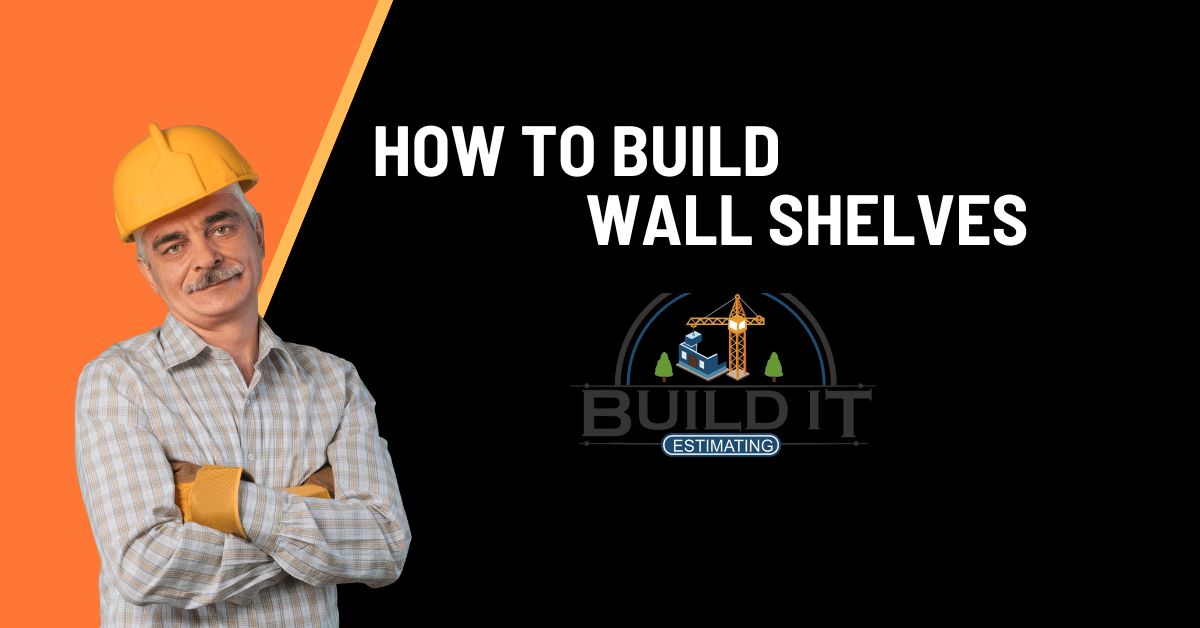Building wall shelves is a rewarding and practical DIY project that enhances the functionality and aesthetics of your home. Whether you’re looking to display your favorite books, showcase decor, or organize essentials, wall shelves offer a versatile solution. This guide will walk you through the process of building wall shelves in the USA, from planning and materials selection to installation and styling, ensuring you achieve professional results.
Why Build Wall Shelves?
Wall shelves are a fantastic addition to any home, providing several benefits:
- Maximized Storage: Shelves utilize vertical space, helping to keep your floors clear and your items organized.
- Aesthetic Appeal: Well-designed shelves add character and style to your rooms, allowing for creative displays.
- Cost-Effective: Building your own shelves can be more affordable than purchasing pre-made ones, and you can customize them to fit your exact needs and preferences.
These advantages make wall shelves a popular choice for homeowners looking to enhance their living spaces.
Materials Needed for Building Wall Shelves
Gathering the right materials is crucial for a successful shelving project. Here’s a list of essential items:
- Wood (pine, oak, or plywood)
- Brackets (if not building floating shelves)
- Screws and wall anchors
- Sandpaper
- Wood stain or paint
- Brushes or rollers
- Measuring tape
- Level
- Stud finder
- Drill and bits
- Saw (circular or hand saw)
- Safety gear (gloves, safety glasses)
Having these materials ready will streamline your building process and ensure you have everything you need to complete your shelves.
Choosing the Right Location
Selecting the ideal location for your wall shelves involves considering both practicality and aesthetics. Think about:
- Functionality: Choose a spot where the shelves will be most useful, such as above a desk, in the kitchen, or in the living room.
- Visual Impact: Ensure the shelves enhance the room’s overall look, complementing existing decor and furniture.
- Wall Structure: Identify walls with studs or adequate support to safely bear the weight of the shelves and their contents.
Properly planning the location ensures your shelves are both attractive and functional.
Measuring and Planning Your Shelves
Accurate measurements and careful planning are key to building sturdy and well-fitted shelves. Start by measuring the wall space where you plan to install the shelves. Consider the following:
- Shelf Length and Width: Determine the desired dimensions based on the items you plan to store.
- Shelf Spacing: Decide on the number of shelves and the spacing between them, ensuring ample room for your items.
Drawing a detailed plan with precise measurements helps visualize the final product and guides the construction process.
Types of Wall Shelves
There are various types of wall shelves to choose from, each with unique installation methods and aesthetic appeal:
- Floating Shelves: These shelves have hidden brackets, giving the appearance of floating on the wall. They are ideal for a sleek, modern look.
- Bracket Shelves: Supported by visible brackets, these shelves are easy to install and offer a more traditional look.
- Built-In Shelves: Custom-made to fit within existing wall recesses or alcoves, these shelves provide a seamless, integrated appearance.
Selecting the type of shelf that best suits your style and needs is crucial for achieving the desired look and functionality.
Tools Required for Building Wall Shelves
Using the right tools makes the building process smoother and more efficient. Essential tools include:
- Saw: For cutting wood to size. A circular saw or hand saw works well.
- Drill: For creating holes and driving screws.
- Level: To ensure shelves are perfectly horizontal.
- Stud Finder: To locate wall studs for secure mounting.
- Measuring Tape: For precise measurements.
Having these tools on hand ensures you can tackle each step of the project with confidence.
Step-by-Step Guide to Building Wall Shelves
Follow this detailed guide to build and install your wall shelves:
Preparing the Wall
Start by preparing the wall for installation. Use a stud finder to locate and mark the studs, ensuring the shelves will be securely anchored. Clear the area of any obstacles and clean the wall surface.
Cutting and Preparing the Wood
Measure and cut the wood to your desired shelf dimensions. Sand the edges and surfaces to remove splinters and create a smooth finish. If you plan to paint or stain the shelves, do so before installation, allowing sufficient drying time.
Assembling the Shelves
For bracket shelves, attach the brackets to the shelves first, ensuring they are evenly spaced and level. For floating shelves, attach the mounting hardware to the wall according to the manufacturer’s instructions.
Mounting the Shelves on the Wall
Position the shelves against the wall, aligning them with the marked studs. Use a level to ensure they are straight. Drill pilot holes through the brackets or mounting hardware into the studs, then secure with screws.
Finishing Touches
After mounting, inspect the shelves for stability. Apply any final coats of paint or stain, if needed, and allow them to dry completely. Add decorative elements or storage items to enhance the shelves’ appearance and functionality.
Decorating and Styling Your Shelves
Once installed, styling your shelves adds a personal touch. Consider:
- Balance: Arrange items in a balanced manner, mixing different shapes and sizes.
- Themes: Create a cohesive look by sticking to a color scheme or theme.
- Functional Decor: Combine practical storage with decorative pieces for a stylish yet useful display.
Experimenting with different arrangements helps create an appealing and organized look.
Common Mistakes to Avoid
Avoid these common pitfalls to ensure a successful shelving project:
- Incorrect Measurements: Double-check all measurements to prevent fitting issues.
- Ignoring Studs: Always anchor shelves to studs for maximum support.
- Overloading Shelves: Follow weight limits to avoid damage or accidents.
Attention to detail and proper planning mitigate these risks.
Maintenance Tips for Wall Shelves
Maintaining your wall shelves ensures their longevity and performance:
- Regular Cleaning: Dust shelves regularly to keep them looking neat.
- Check Stability: Periodically check screws and brackets for any loosening.
- Avoid Overloading: Stick to recommended weight limits to prevent sagging or damage.
Consistent care keeps your shelves in excellent condition.
Cost Considerations
Building wall shelves can be cost-effective compared to purchasing pre-made ones. Factors affecting cost include:
- Material Quality: Higher-quality wood and brackets may cost more but offer better durability.
- DIY vs. Professional: DIY projects save labor costs but require time and tools.
- Size and Design: Larger or more intricate shelves will naturally cost more.
Budgeting for materials and considering DIY options can help manage costs effectively.
Environmental Impact of DIY Shelves
Choosing sustainable materials and practices can reduce the environmental impact of your DIY project:
- Reclaimed Wood: Using reclaimed or recycled wood minimizes waste and environmental footprint.
- Eco-Friendly Finishes: Opt for low-VOC paints and stains.
- Efficient Use of Materials: Plan cuts to minimize waste and make the most of your materials.
Conclusion
Building wall shelves is an enriching DIY project that enhances your home’s storage and aesthetic appeal. By carefully selecting materials, planning the installation, and following detailed steps, you can create sturdy and stylish shelves tailored to your needs. Regular maintenance and mindful design choices ensure your shelves remain functional and attractive for years to come. Whether you’re a seasoned DIY enthusiast or a beginner, this guide provides all the information you need to successfully build wall shelves in the USA.

